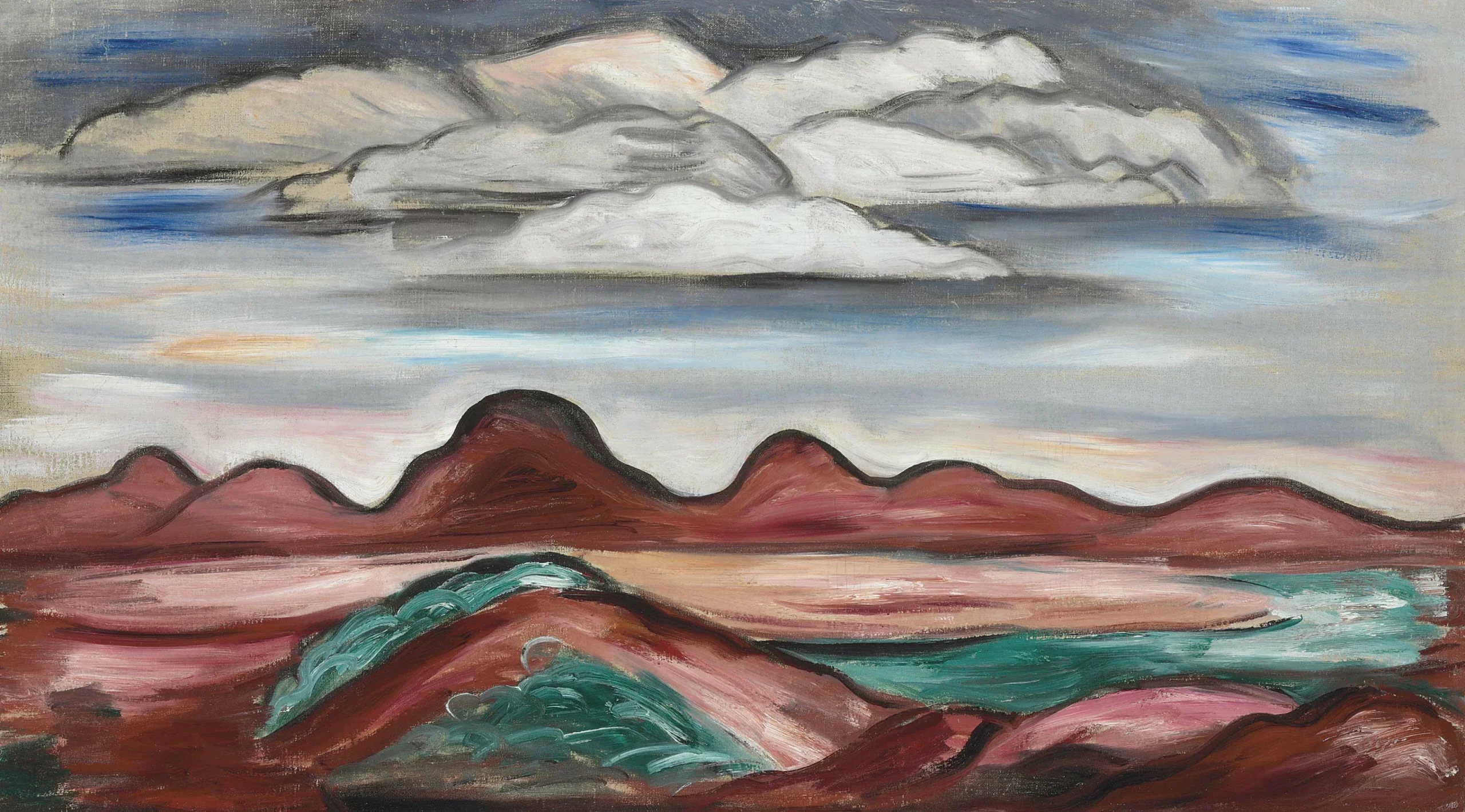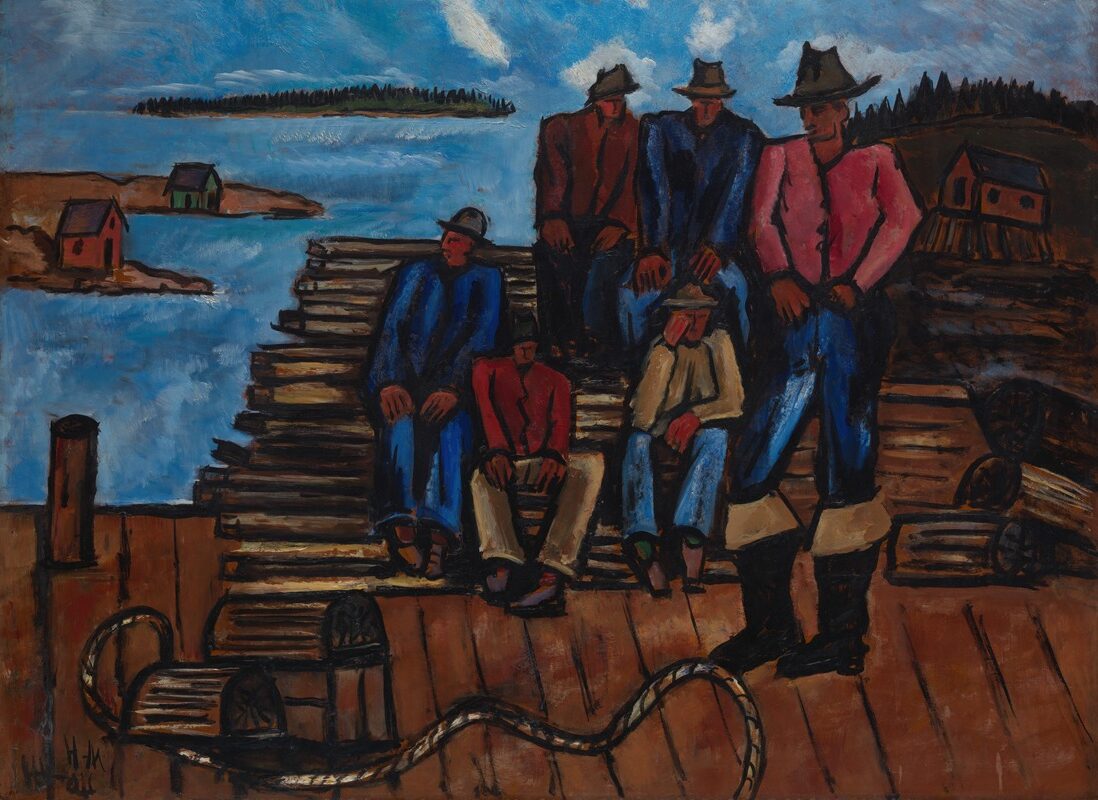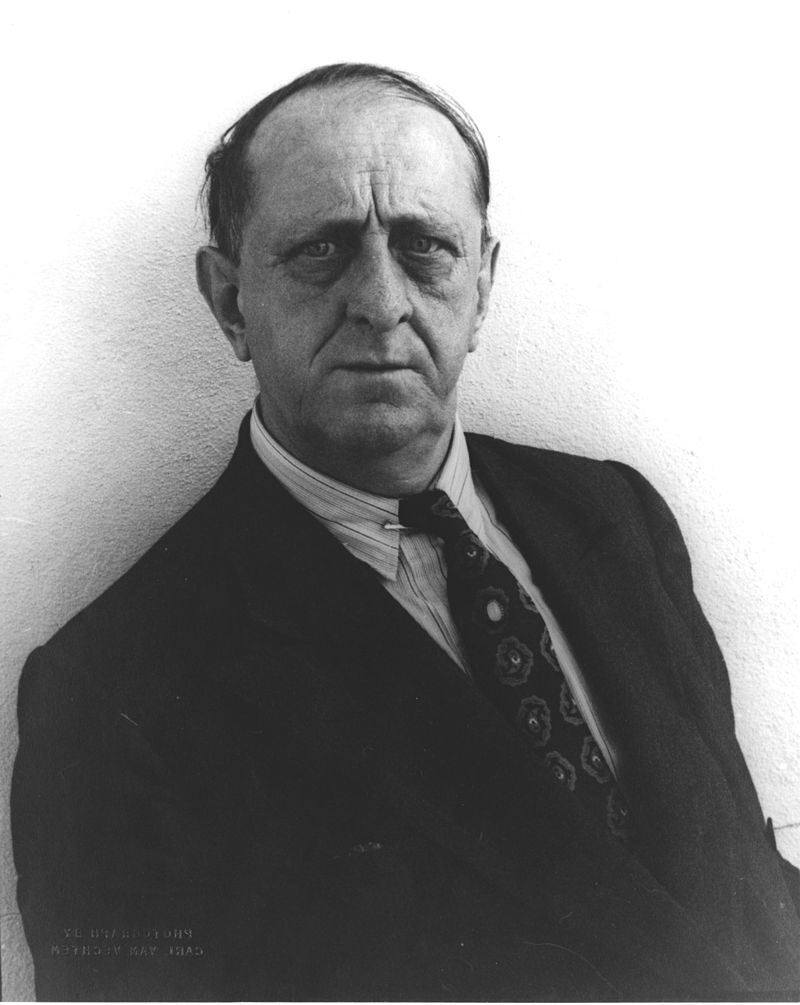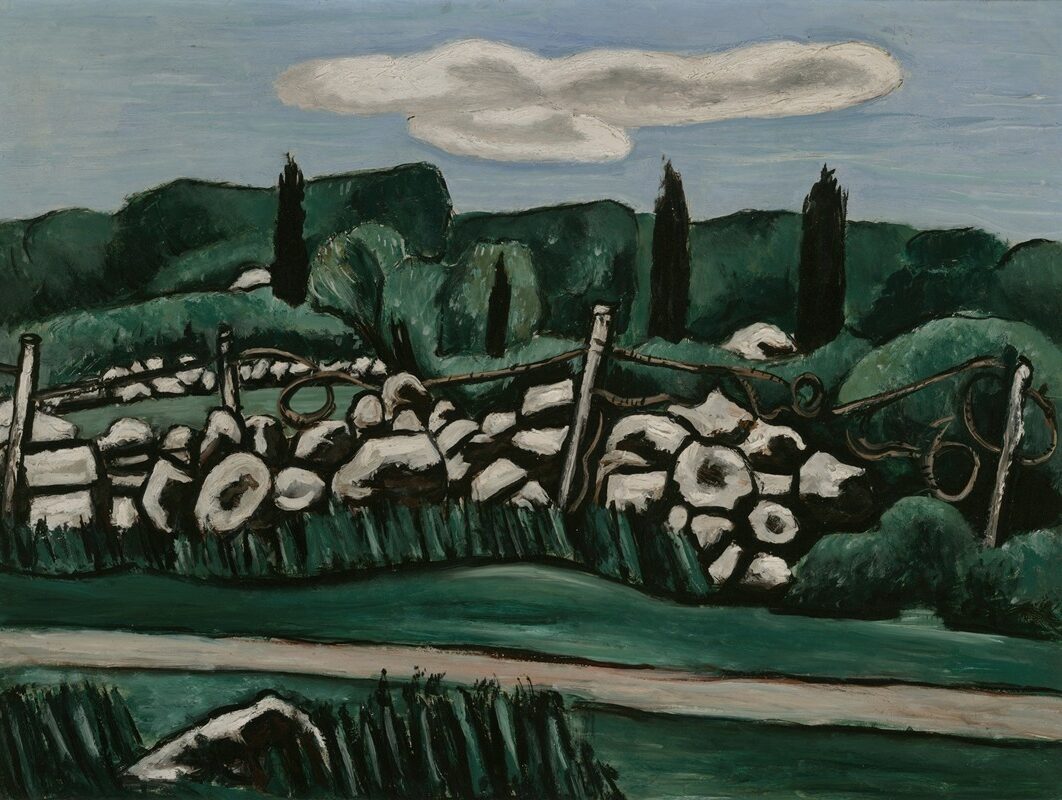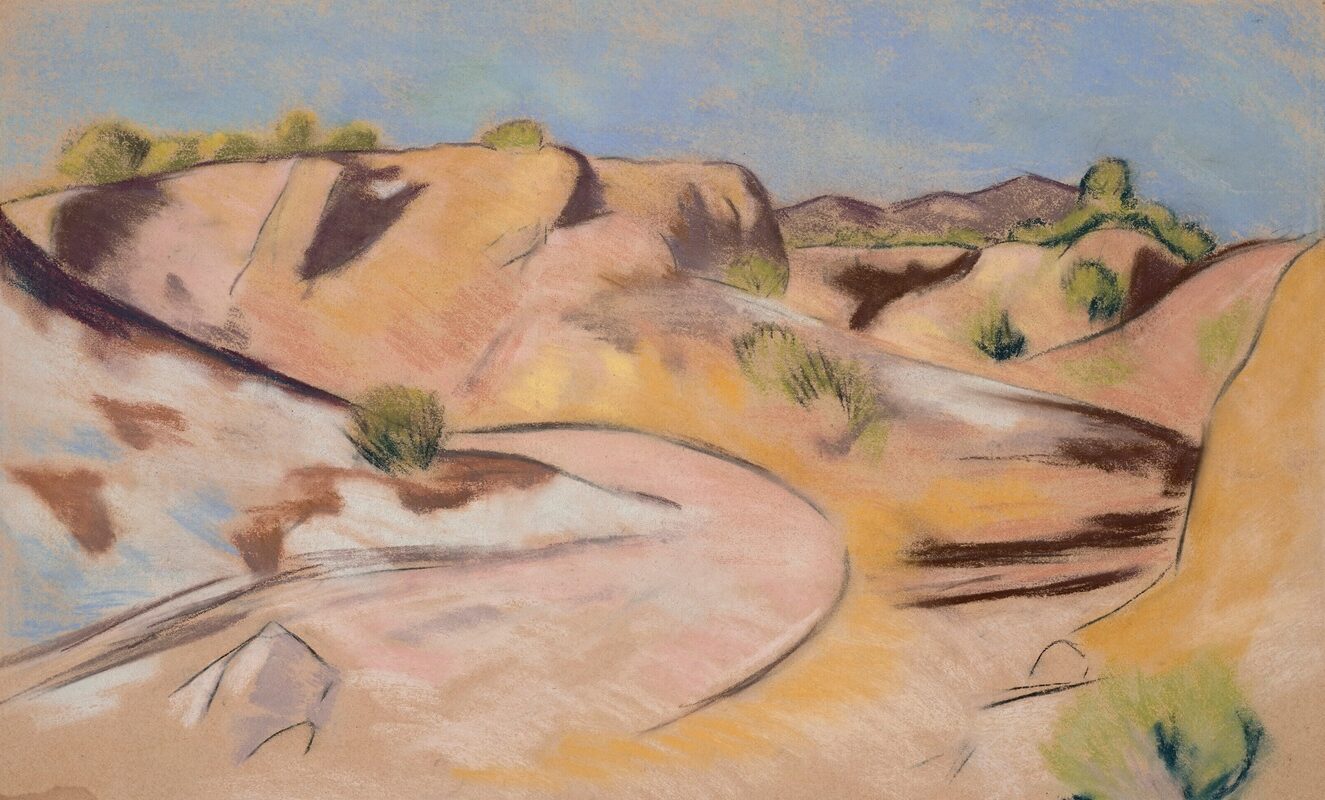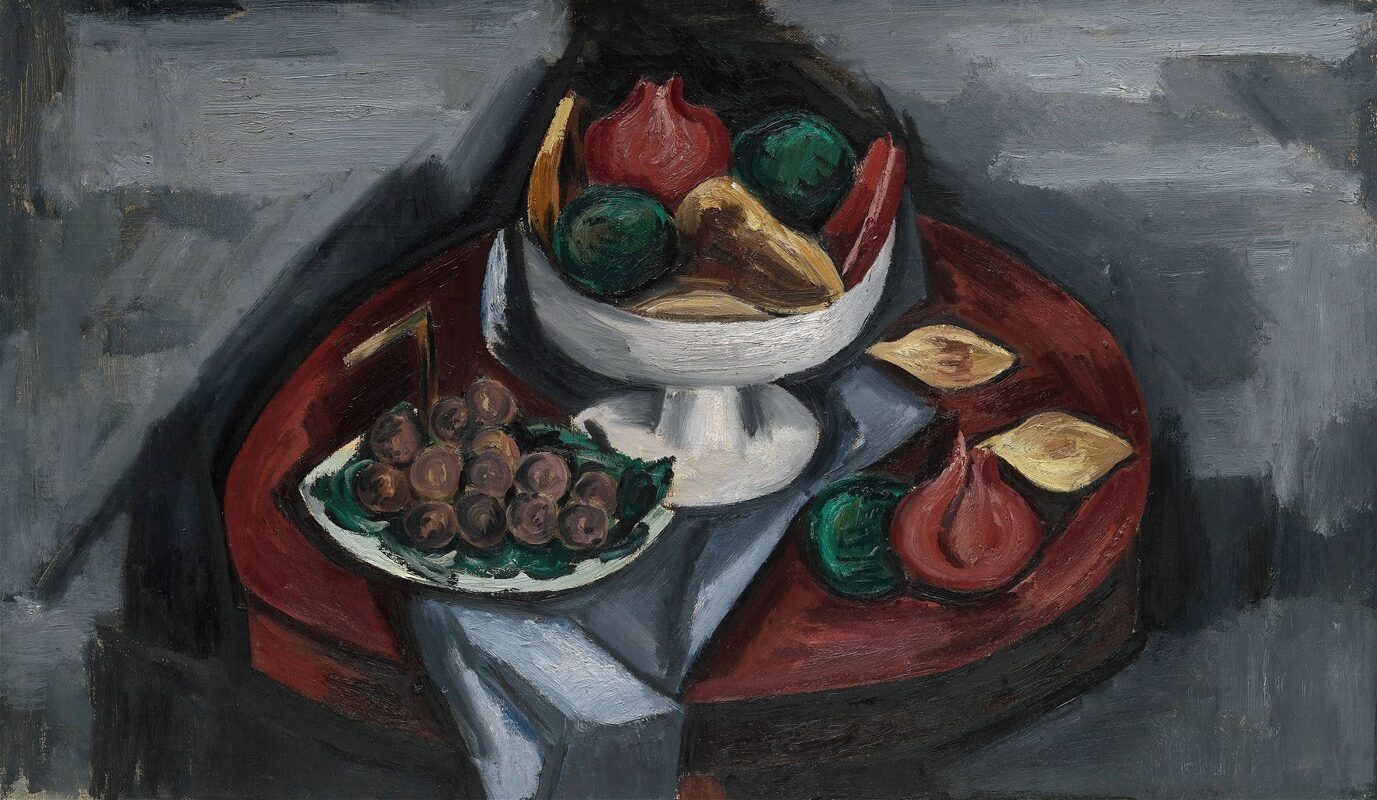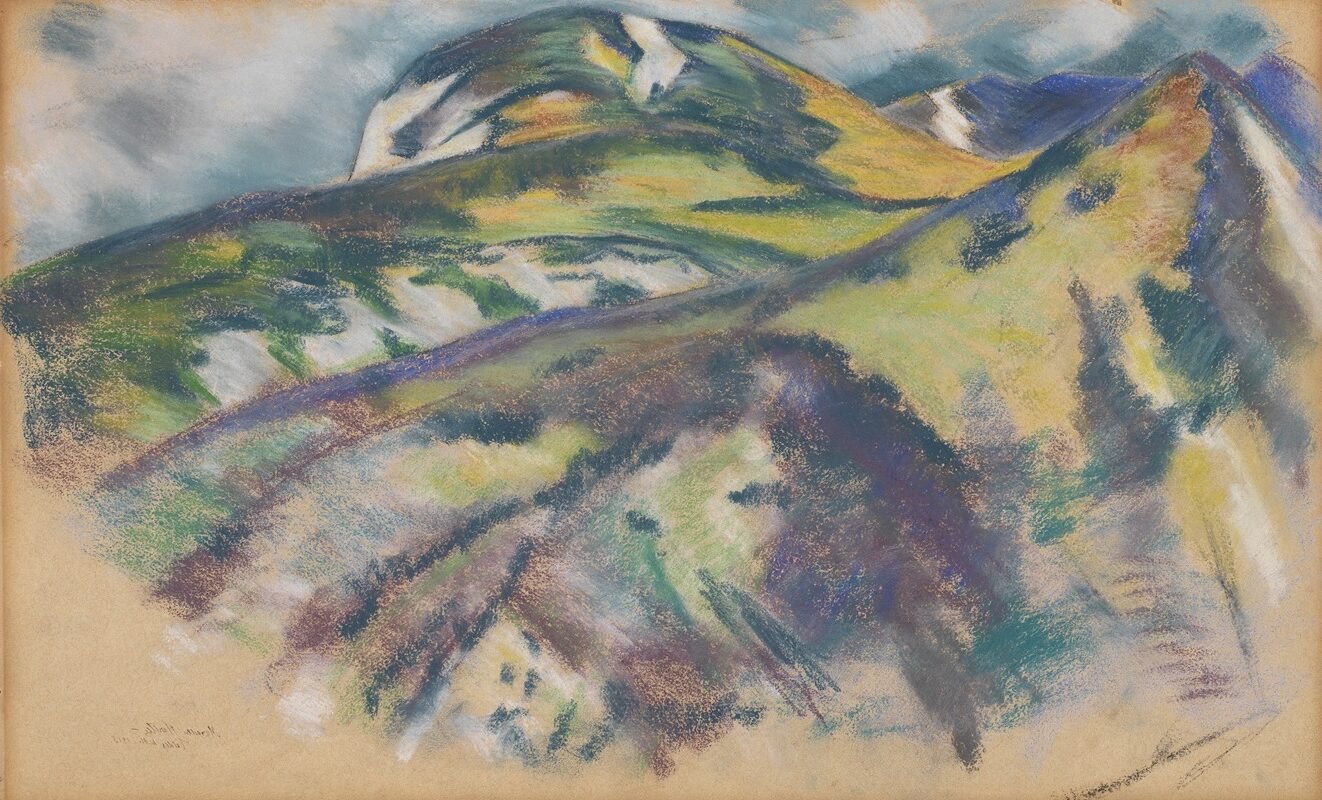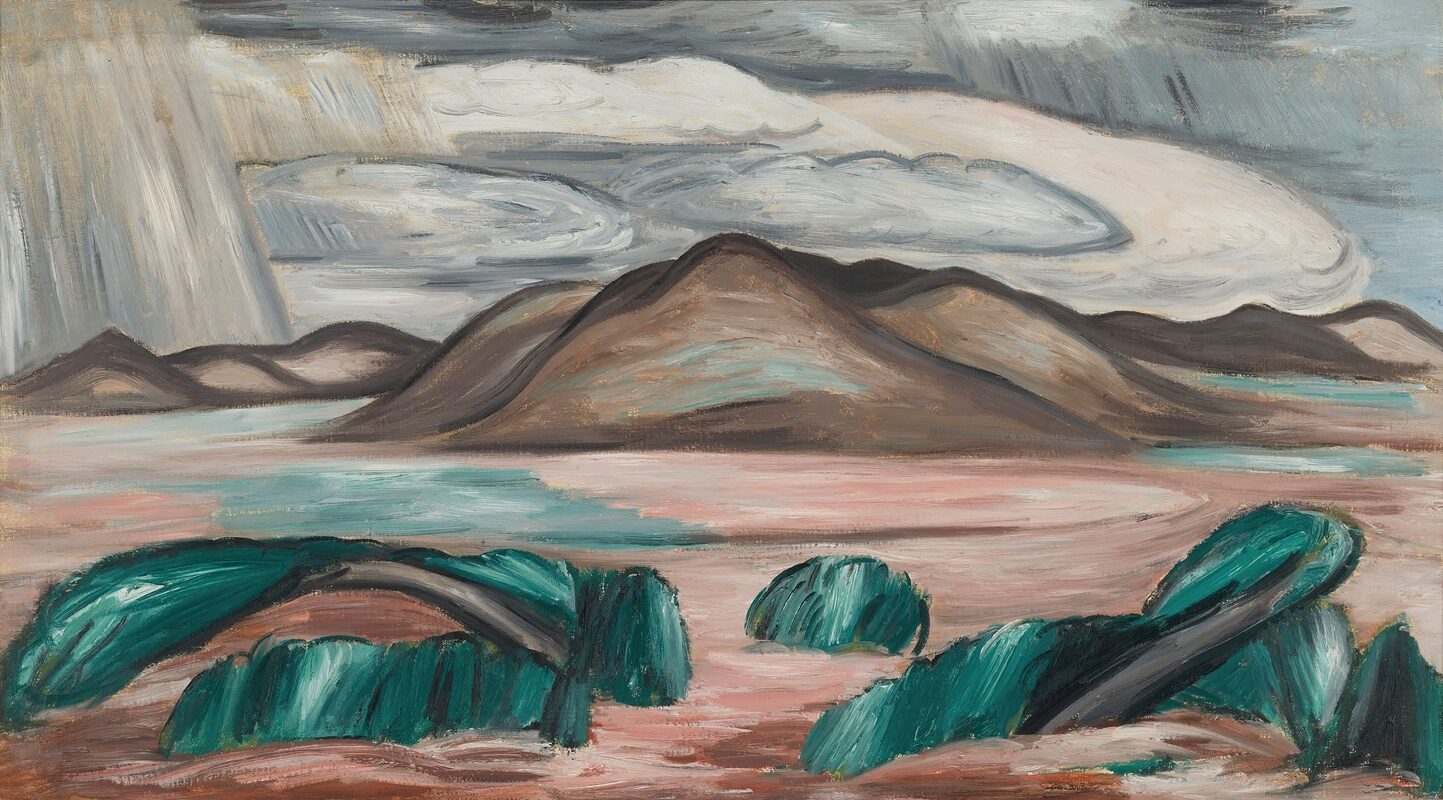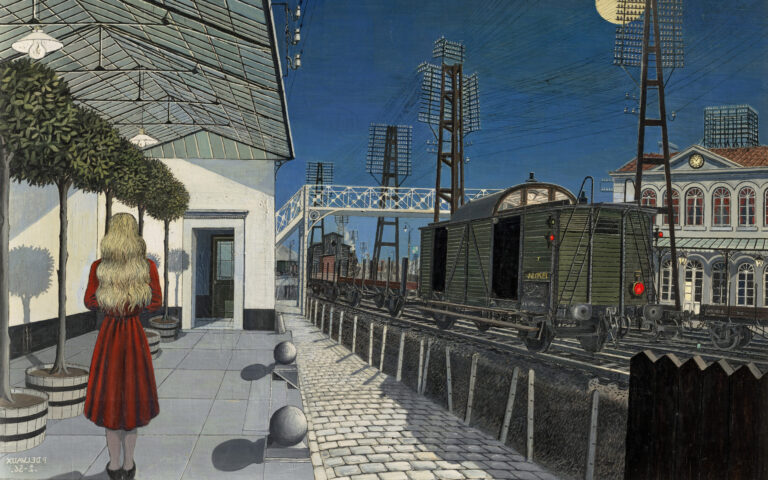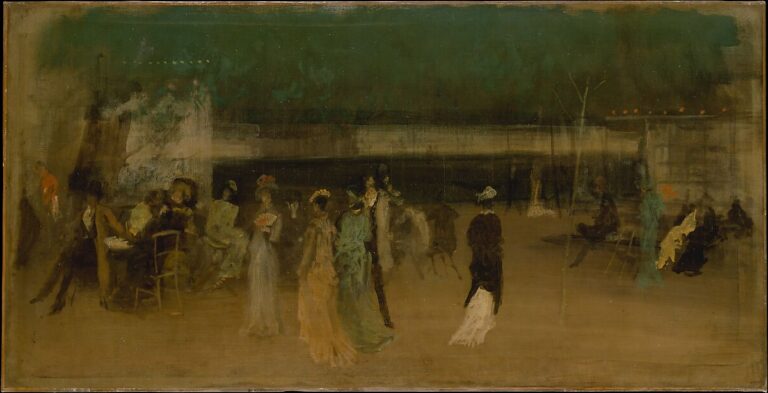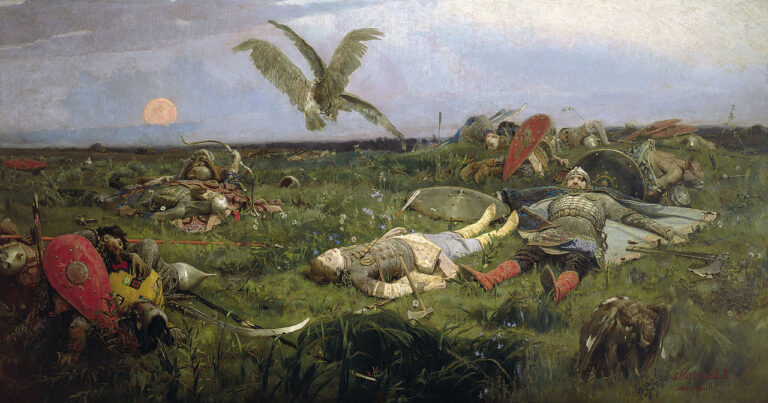Marsden Hartley: Painter Who Revolutionized American Modernism
Born: January 4, 1877, Lewiston, Maine, U.S.
Death: September 2, 1943, Ellsworth, Maine, U.S.
Art Movement: American Modernism
Nationalité : Américain
Teacher: William Merritt Chase
Institution: Cleveland Institute of Art, Parsons School of Design, National Academy of Design
Marsden Hartley: Painter Who Revolutionized American Modernism
Life and Education of Marsden Hartley
Marsden Hartley’s journey from humble beginnings in Maine to becoming a significant American modernist painter was shaped by his formal education and travels. His artistic development occurred through various schools and influential mentors across America and Europe.
Early Life in Lewiston, Maine
Marsden Hartley was born Edmund Hartley on January 4, 1877, in Lewiston, Maine. After his mother’s death when he was eight, Hartley experienced a difficult childhood marked by his family’s frequent relocations and financial struggles.
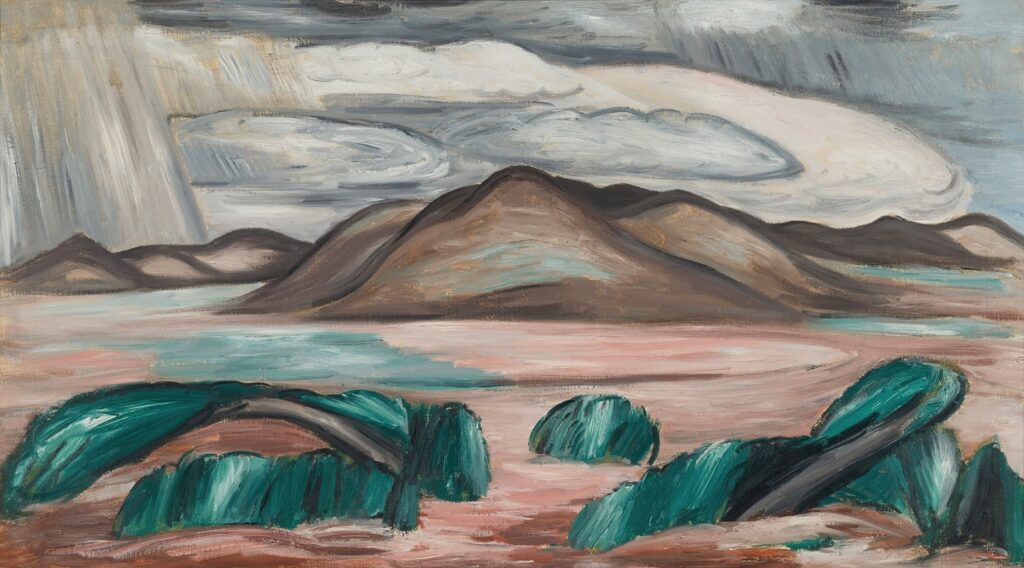
New Mexico Recollection No. 8, 1923, by Marsden Hartley
In 1892, he joined his family in Cleveland, Ohio, where his artistic talents began to emerge.
Hartley’s early life was characterized by hardship, but these experiences later informed his artistic sensibilities and connection to the Maine landscape.
His formal name change to Marsden (his stepmother’s surname) reflected his evolving identity as he began to pursue artistic training.
Débuts artistiques et influences
Hartley’s formal art education began at the Cleveland School of Art in 1893, where he studied on scholarship. He took private lessons with local artist John Semon to further develop his skills.
By 1898, he had fully committed to artistic training, continuing his studies at the Cleveland School of Art. Later, at age 22, Hartley moved to New York City to attend the William Merritt Chase School of Art, though the high tuition presented financial challenges.
His education continued at the National Academy of Design, where he refined his technique.
During this formative period, Hartley developed a distinctive style influenced by American Impressionism and later, European modernism.
European Ventures and Associations
In 1912, Hartley traveled to Europe with support from photographer and gallery owner Alfred Stieglitz, who recognized his talent. This marked the beginning of his significant European period.
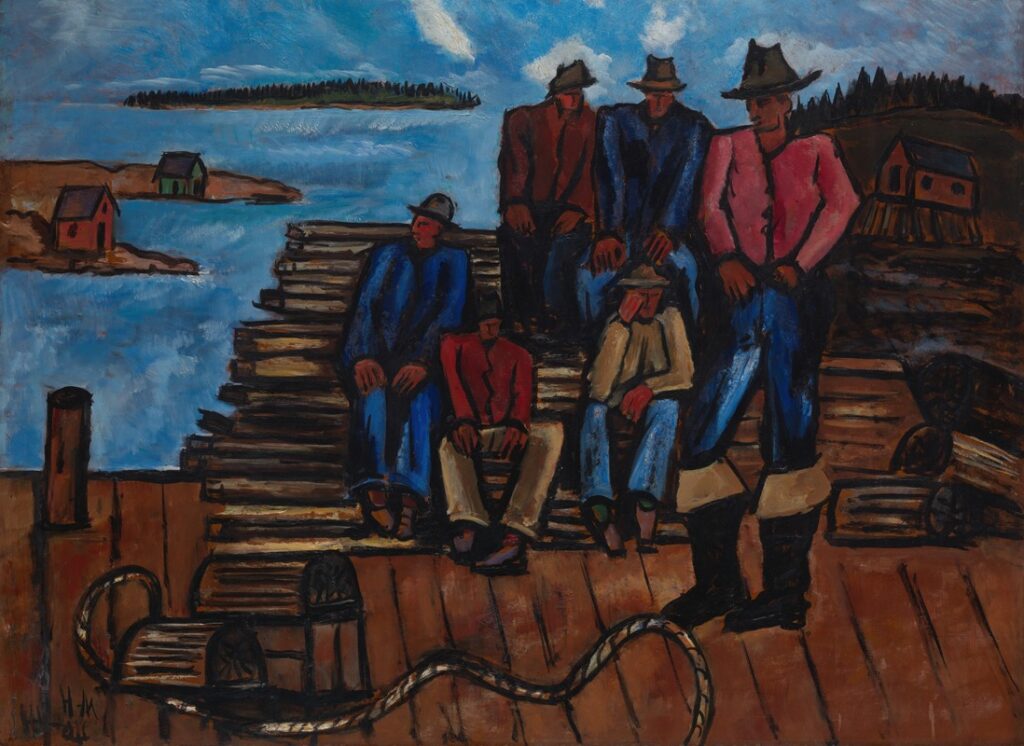
Lobster Fishermen, 1940–1941, by Marsden Hartley
While in Paris, he became acquainted with Gertrude Stein and her circle of avant-garde artists. These connections exposed him to cutting-edge artistic movements and theories.
His time in Berlin proved especially influential, where he associated with German expressionists including Franz Marc and Wassily Kandinsky. The bold colors and abstract forms of these artists deeply affected Hartley’s work.
European modernism dramatically transformed his artistic approach, leading to his most innovative and distinctive paintings. Hartley absorbed these influences while maintaining his unique American perspective.
Hartley’s Artistic Evolution
Marsden Hartley’s artistic journey traversed multiple continents and styles, evolving from early impressionistic landscapes to bold modernist abstractions before returning to representational work focused on his native New England.
Embracing Modernism and Avant-Garde
Hartley’s artistic transformation began in earnest when he traveled to Europe in 1912. In Paris, he encountered cutting-edge movements including Cubism and Expressionism. These influences dramatically shifted his approach to painting.
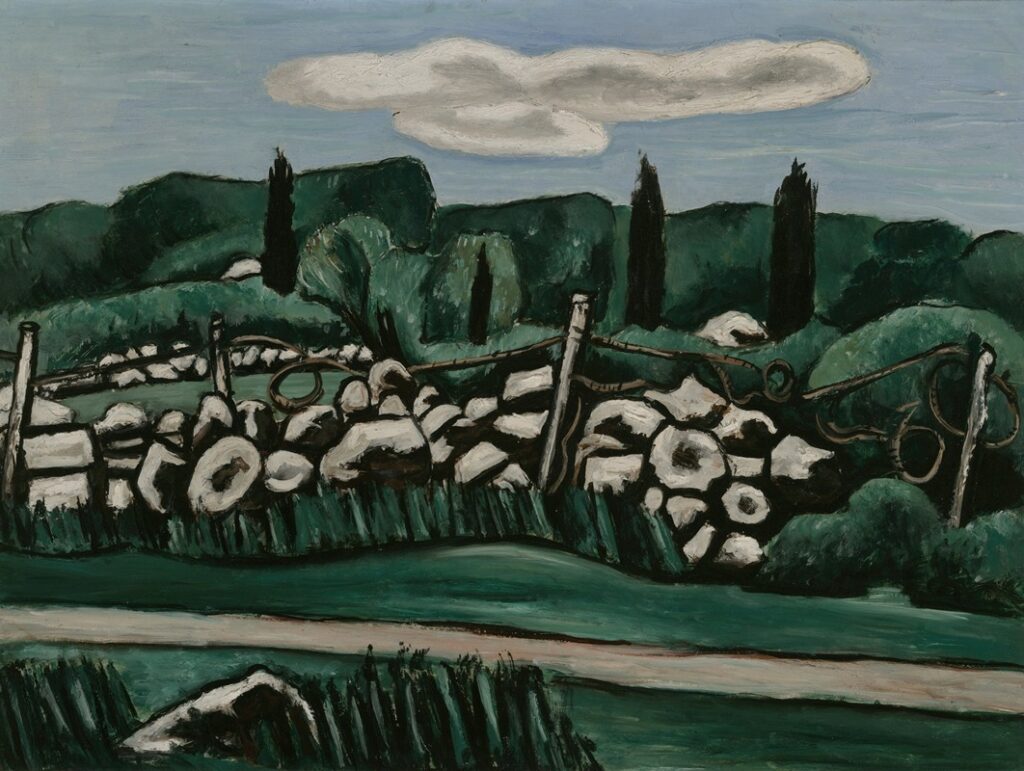
The Last Stone Walls, Dogtown, ca. 1936–37, by Marsden Hartley
In Germany, Hartley developed his most radical abstract works. His “German Military” series used bold symbols, geometric shapes, and vibrant colors to create powerful compositions that reflected his fascination with German military aesthetics.
The outbreak of World War I forced Hartley to return to America in 1915. He brought back a distinctly European modernist sensibility that set him apart from many American painters of the time.
Landscape and Abstraction
After returning from Europe, Hartley moved between abstraction and representation. His time in New Mexico (1918-1919) produced paintings with flattened mountains and stylized landscapes that blended abstraction with recognizable forms.
Hartley’s work from this period shows a deep connection to the American landscape. His paintings of mountains, particularly his later works of Mt. Katahdin in Maine, reveal his evolving style.
His brushwork became more distinctive during this period. Inspired by artists like Giovanni Segantini, Hartley adopted a “stitchlike” brushstroke technique that added texture and energy to his landscapes.
Return to America and Later Work
In the 1930s, Hartley returned permanently to his native Maine. This final chapter marked a shift toward more representational work with strong emotional undertones.
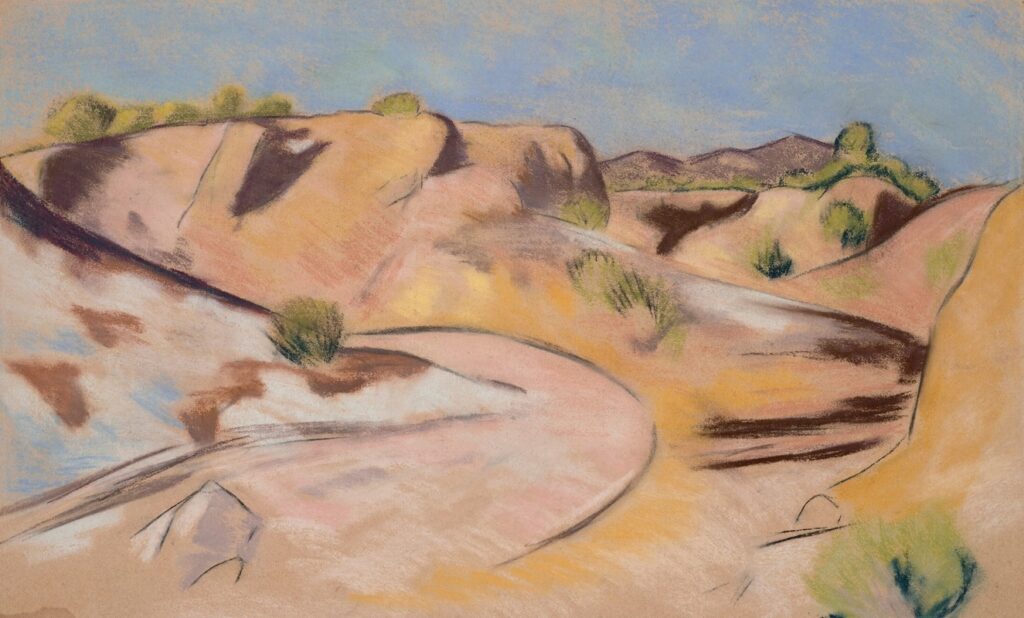
New Mexico, 1918, by Marsden Hartley
His paintings of the Maine coast, rugged fishermen, and the harsh New England landscape captured the region’s character. Works from Nova Scotia similarly depicted the resilience of local people against the backdrop of a demanding seascape.
Hartley’s late style combined modernist techniques with regional subjects. His portraits of Maine fishermen and hunters showed sturdy, almost sculptural figures rendered with bold outlines and simplified forms.
This period, while less experimental, demonstrated Hartley’s masterful synthesis of his modernist training with his deep connection to place and community.
Héritage et expositions
Marsden Hartley’s influence on American modernism expanded significantly after his death in 1943. His work has been preserved in major collections and celebrated through numerous exhibitions that highlight his contributions to art history.
Posthumous Recognition and Collections
Hartley’s legacy grew substantially through Alfred Stieglitz’s advocacy. Stieglitz, who first exhibited Hartley’s work at his gallery “291,” continued promoting him as a pioneering American modernist after his death.
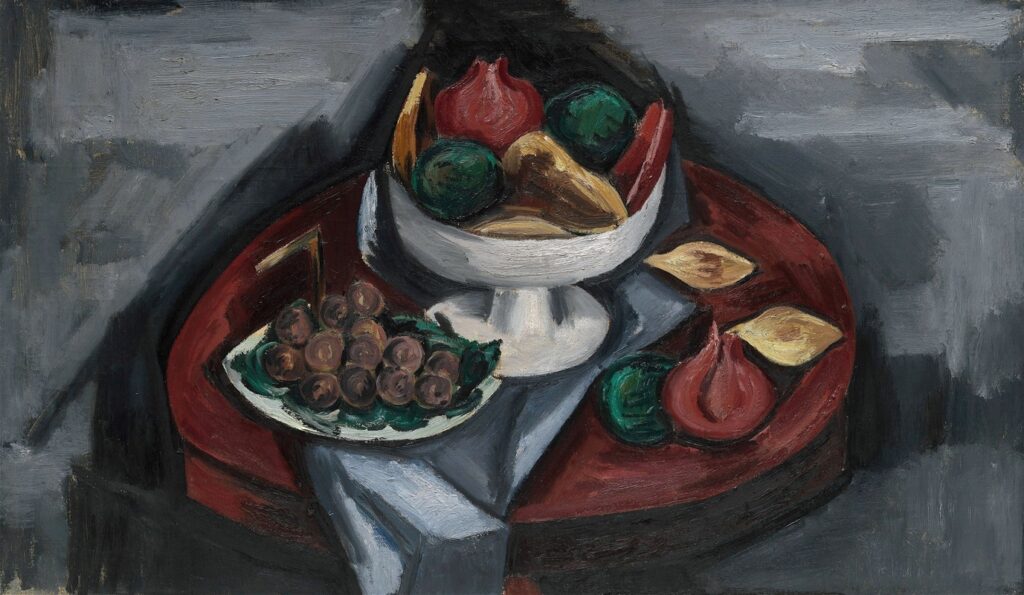
Still Life No. 2, circa 1921–23, by Marsden Hartley
The National Gallery of Art in Washington, D.C. maintains a significant collection of Hartley’s paintings, including works from his German period. The Metropolitan Museum of Art (formerly exhibited at The Met Breuer) houses several important pieces that showcase his evolving style.
Colby College Museum of Art in Maine has emerged as a central institution for Hartley’s legacy. The museum launched the Marsden Hartley Legacy Project, creating a comprehensive online catalog of all known paintings and works on paper by the artist.
Notable Exhibitions and Collaborations
Hartley’s German Paintings (1913-1915) series, including works dedicated to Karl Von Freyburg, have received special attention in major retrospectives. These paintings, with their bold abstract symbols and military motifs, represent a crucial phase in American modernist painting.
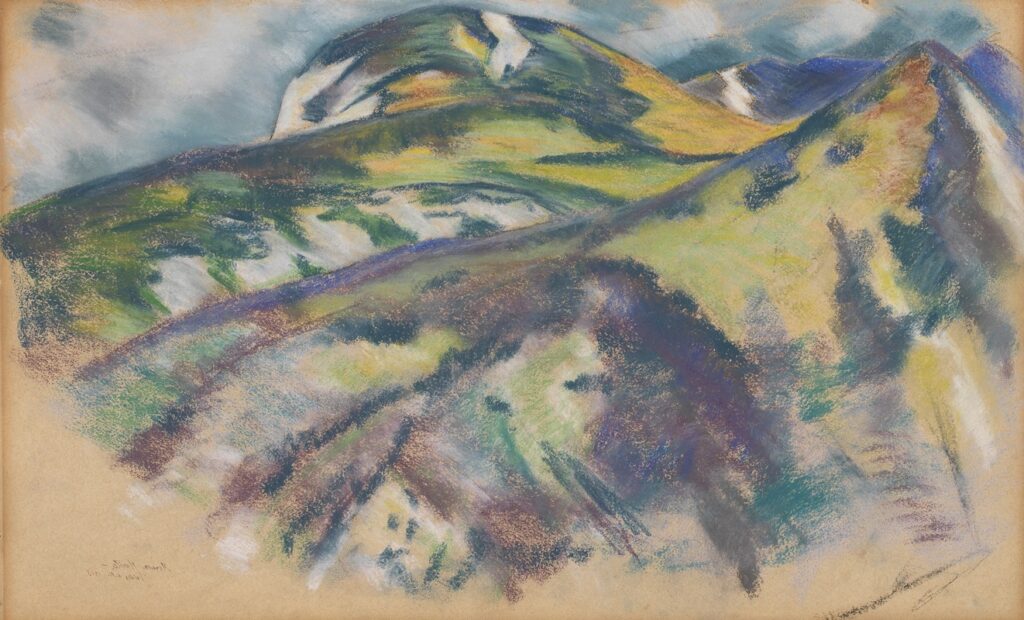
Valdez Hills, 1918, by Marsden Hartley
“Marsden Hartley: Adventurer in the Arts” opened in April 2022, highlighting how his travels and personal mementos shaped his artistic vision. This exhibition reinforced his reputation as the “painter of Maine” while acknowledging his cosmopolitan influences.
“Marsden Hartley and the Sea” examined his powerful connection to coastal landscapes and featured works inspired by the drowning of three young men off Eastern Points Island, a tragedy that profoundly affected his later career.
Questions fréquemment posées
Marsden Hartley’s artistic legacy raises many questions about his techniques, influences, and contribution to American modernism. His distinctive style and connection to Maine have shaped his reputation as a pioneering figure in 20th century art.
What are the characteristics that define Marsden Hartley’s painting style?
Hartley’s painting style featured bold colors, strong contours, and simplified forms. He often used thick, expressive brushwork that gave his paintings a sense of energy and emotion.
His work frequently incorporated symbolic elements and geometric patterns, especially during his German expressionist period. These characteristics helped establish him as a pioneer of American modernism.
Hartley’s later Maine landscapes show rugged, powerful depictions of nature with stark contrasts and monumental forms. His distinctive approach to color and composition created a unique visual language that was both modern and deeply personal.
How have Marsden Hartley’s Maine landscapes influenced American art?
Hartley’s Maine landscapes transformed how American artists portrayed the rugged northeastern coastline. His powerful, almost spiritual connection to his native state infused these works with emotional depth beyond mere representation.
These paintings elevated regional American landscapes to subjects worthy of modernist treatment. His bold interpretations of Mount Katahdin and the Maine coast showed that American scenes could be vehicles for artistic innovation.
Hartley’s Maine works influenced later generations of American painters to explore regional identity through a modernist lens. His status as “The Painter of Maine” reflects how thoroughly he captured and redefined the visual identity of the state.
What significance does the painting ‘Portrait of a German Officer’ hold in Marsden Hartley’s body of work?
“Portrait of a German Officer” represents a pivotal moment in Hartley’s artistic development. Created during his time in Berlin, this abstract memorial to his friend Karl von Freyburg combines military symbols with personal emotion.
The painting demonstrates Hartley’s engagement with European avant-garde movements, particularly German Expressionism. Its coded imagery and abstract composition mark it as one of the most innovative American paintings of its era.
This work also reveals Hartley’s personal experiences as an American living abroad during a complicated political period. The painting’s emotional power and technical sophistication make it a cornerstone of his artistic legacy.
Can you describe the evolution of Marsden Hartley’s artistic approach throughout his career?
Hartley’s early work showed influences of American Impressionism before he traveled to Paris in 1912. After exposure to European modernism, he developed a more abstract style incorporating symbolic elements and vibrant colors.
His Berlin period (1913-1915) produced his most radical abstractions, including military-inspired paintings with coded personal meanings. Following World War I, Hartley shifted between representational and abstract approaches while traveling through Europe and North America.
In the 1930s, Hartley returned to Maine and developed his mature style – powerful, simplified landscapes and figure paintings that merged modernist techniques with regional subjects. This final phase cemented his reputation as a distinctly American modernist with deep roots in place.
What is the historical and cultural context behind Marsden Hartley’s ‘Dogtown’ series of paintings?
The Dogtown series depicts an abandoned colonial settlement near Gloucester, Massachusetts. Hartley painted these works in the 1930s, capturing the desolate landscape with its scattered boulders and sense of historical abandonment.
These paintings emerged during the Great Depression, reflecting the economic and spiritual hardship of the era. Hartley saw in Dogtown a metaphor for American resilience and the enduring power of the landscape.
The series demonstrates Hartley’s interest in forgotten American places with complex histories. His stark, monumental treatment of these scenes transformed a local landmark into a powerful symbol of American cultural memory.
How did Marsden Hartley’s work contribute to the development of Modernist painting in America?
As a member of Alfred Stieglitz’s circle, Hartley helped introduce European modernist ideas to American audiences. His willingness to experiment with abstraction placed him at the forefront of American avant-garde art in the early 20th century.
Hartley demonstrated that American subjects could be treated with modernist approaches. His integration of regional identity with international artistic movements created a pathway for American artists to be both locally rooted and globally relevant.
His bold formal innovations in color, composition, and symbolism expanded the visual vocabulary of American painting. Hartley’s legacy shows how modernism could embrace both abstraction and representation while maintaining a distinctive American perspective.

